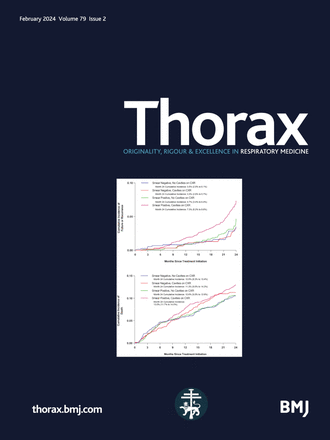Short-term exposure to ultrafine particles and asthma hospital admissions in children in Copenhagen, Denmark.
IF 7.7
1区 医学
Q1 RESPIRATORY SYSTEM
引用次数: 0
Abstract
BACKGROUND Ultrafine particles (UFP; <0.1 µm in diameter) are not regulated or commonly monitored but may be harmful to human health, particularly for children. In this study, we aimed to examine the association between short-term exposure to UFP and asthma hospital admissions in children. METHODS Daily UFP concentrations (2002-2018) were monitored at an urban background station in Copenhagen, Denmark. Asthma hospital admissions, demographic and socioeconomic information of children (0-18 years) were obtained from registries. A case-crossover design was applied to estimate the association between hospital admissions and up to 6-day UFP exposure windows for all children, and stratified by age, sex, family income, mother's education, prior asthma or prior respiratory infection. RESULTS We observed 15 903 asthma hospital admissions in total. An IQR increase in UFP was significantly associated with asthma hospital admissions, strongest at 2-day exposure windows (risk ratio (RR): 1.17 (95% CI: 1.09, 1.25)). These associations remained unchanged when adjusting for particulate matter <2.5 µm in diameter (PM2.5) or nitrogen dioxide (NO2), for which we also detected significant positive associations. Associations with UFP were stronger for school-aged children (5-14 years: RR: 1.26 (95% CI: 1.15, 1.38)) than for children younger than 5 years (1.01 (95% CI: 0.93, 1.10)). CONCLUSIONS In this large study in a low-exposure setting, we find that short-term exposure to UFP can trigger asthma hospital admissions in children, independently of associations with PM2.5 or NO2. This study adds evidence calling for the regulation and improvement of UFP exposure assessment to protect children's health in urban areas.丹麦哥本哈根儿童短期接触超细颗粒物与哮喘住院率
超细颗粒(UFP;<0.1微米直径)不受管制或通常监测,但可能对人体健康有害,特别是对儿童有害。在这项研究中,我们旨在研究短期暴露于UFP与儿童哮喘住院之间的关系。方法在丹麦哥本哈根的一个城市背景站监测2002-2018年UFP的日浓度。从登记处获得儿童(0-18岁)的哮喘住院情况、人口统计学和社会经济信息。采用病例交叉设计来估计所有儿童住院与最多6天UFP暴露窗之间的关系,并按年龄、性别、家庭收入、母亲教育程度、既往哮喘或既往呼吸道感染进行分层。结果共观察住院哮喘患者15 903例。UFP的IQR增加与哮喘住院率显著相关,在2天暴露窗口时最强(风险比(RR): 1.17 (95% CI: 1.09, 1.25))。当调整直径<2.5µm的颗粒物(PM2.5)或二氧化氮(NO2)时,这些关联保持不变,我们也发现了显著的正相关。学龄儿童(5-14岁:RR: 1.26 (95% CI: 1.15, 1.38))与UFP的相关性强于5岁以下儿童(1.01 (95% CI: 0.93, 1.10))。结论:在这项低暴露环境下的大型研究中,我们发现短期暴露于UFP可引发儿童哮喘住院,与PM2.5或NO2无关。本研究为规范和改进UFP暴露评估提供了证据,以保护城市地区儿童的健康。
本文章由计算机程序翻译,如有差异,请以英文原文为准。
求助全文
约1分钟内获得全文
求助全文
来源期刊

Thorax
医学-呼吸系统
CiteScore
16.10
自引率
2.00%
发文量
197
审稿时长
1 months
期刊介绍:
Thorax stands as one of the premier respiratory medicine journals globally, featuring clinical and experimental research articles spanning respiratory medicine, pediatrics, immunology, pharmacology, pathology, and surgery. The journal's mission is to publish noteworthy advancements in scientific understanding that are poised to influence clinical practice significantly. This encompasses articles delving into basic and translational mechanisms applicable to clinical material, covering areas such as cell and molecular biology, genetics, epidemiology, and immunology.
 求助内容:
求助内容: 应助结果提醒方式:
应助结果提醒方式:


